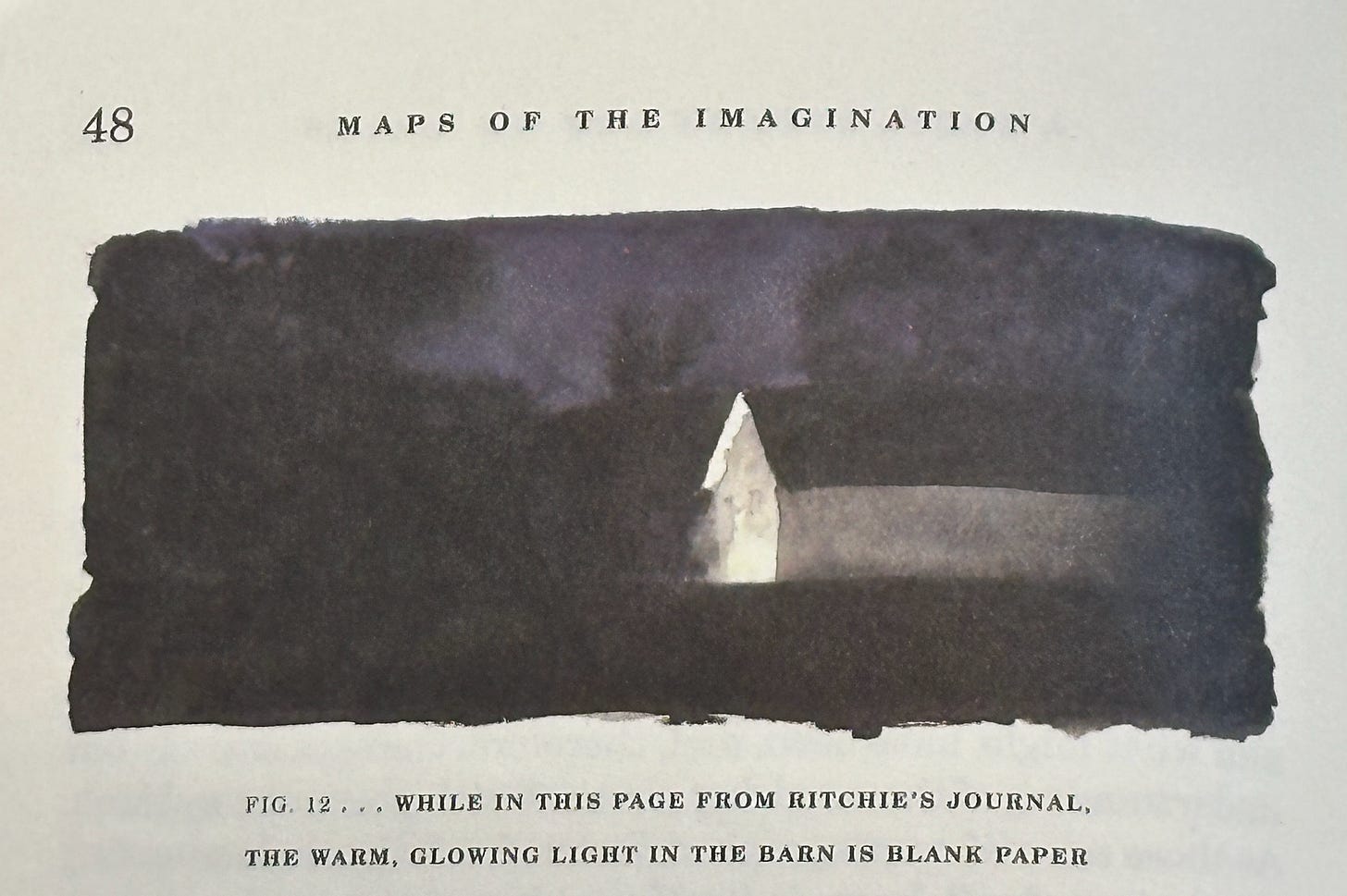
One book that I have had for a long time and always survives purges of our bookshelves is Peter Turchi’s Maps of the Imagination: The writer as cartographer”. In practical and engaging ways the book draws parallels between the process of writing and the process of making maps.
The image above is included in the chapter “A wide landscape of snows”. The chapter explores the ways that what is left out of a story or piece of writing, and what is left out of a map, plays a significant role in creating its meaning. It’s a relation of co-dependence. Turchi writes:
“…it isn’t the blank itself that does the work but the material on either side, charged objects creating an electrostatic field. Without anything around or within them, blanks are nothing.”
Conversely, the material around them can only be understood because of the blanks.
There is solace in this duality between detail and blank, a reminder that our experience is formed of presence and absence, by what we know and what we don’t know - and perhaps never will. And as the painting of the barn shows, blanks can also be sources of light and illumination.
Architects, of course, are familiar with this. Their work organizes material around ‘empty’ space, with the interplay between the two creating the experience for the user.
I am reminded of a story a great uncle shared. He taught reading, and wasn’t sure how to help a particular student who was really struggling, until he realized that the student was trying to read the spaces between the letters instead of the letters themselves.
************************
Through 2024, It’s Material is sharing one use of the word “material” each week, on Tuesdays


